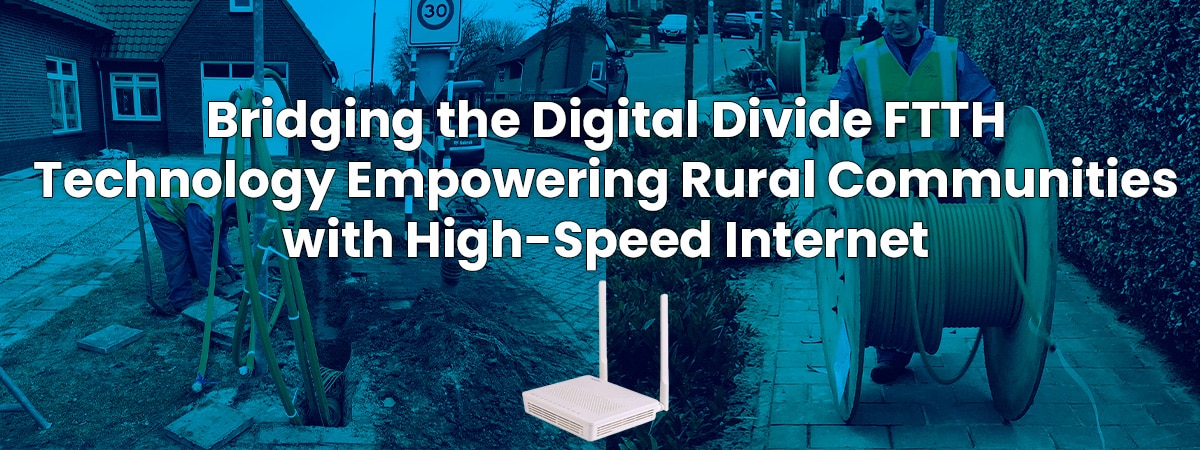Introduction:
Access to high-speed internet has become a necessity in our digitally driven world. However, the digital divide continues to persist, disproportionately affecting rural communities. The good news is that Fiber-to-the-Home (FTTH) technology is not limited to urban areas; it has the potential to transform rural communities by bridging the digital divide and providing equal access to high-speed internet. In this article, we explore how FTTH technology is empowering rural communities and opening doors to a connected future.
- Overcoming Geographical Challenges:
One of the significant advantages of FTTH technology is its ability to overcome geographical challenges that often hinder internet connectivity in rural areas. By deploying fiber optic cables directly to homes in rural communities, FTTH eliminates distance-related signal degradation and provides consistent high-speed internet access regardless of location. - Unleashing High-Speed Connectivity:
FTTH technology enables rural communities to enjoy the same level of high-speed connectivity as their urban counterparts. With fiber optic connections, residents can effortlessly stream HD videos, engage in online learning, work remotely, and access cloud-based services. This not only enhances their quality of life but also opens doors to new opportunities and economic growth. - Closing the Educational Gap:
Access to high-speed internet is crucial for education in today’s digital age. FTTH technology empowers rural students with the ability to engage in online learning, access educational resources, and connect with teachers and peers from around the world. It bridges the educational gap, ensuring that students in rural communities have equal opportunities to thrive academically. - Driving Economic Development:
High-speed internet access provided by FTTH technology can be a catalyst for economic development in rural areas. It attracts businesses, remote workers, and entrepreneurs who can leverage the reliable and fast internet connectivity to establish ventures, create job opportunities, and drive local economies forward. It also allows existing businesses to expand their reach and compete in the global marketplace. - Enhancing Healthcare and Telemedicine:
Access to quality healthcare is vital for rural communities. FTTH technology enables telemedicine initiatives, connecting rural patients with healthcare professionals remotely. It facilitates virtual consultations, remote diagnostics, and medical data exchange, improving healthcare access and outcomes for residents in remote areas. - Strengthening Community Engagement:
FTTH technology brings communities together by fostering improved communication and community engagement. It enables seamless video conferencing, online collaboration, and access to social platforms, allowing residents to connect, share ideas, and participate in virtual community initiatives.
Conclusion:
FTTH technology is a powerful tool that transcends geographical limitations and empowers rural communities with equal access to high-speed internet. By bridging the digital divide, FTTH is revolutionizing education, healthcare, economic development, and community engagement in rural areas. With FTTH, rural communities can unlock their full potential, creating a more inclusive and connected future for all. It is time to embrace the transformative power of FTTH and ensure that no community is left behind in the digital revolution.
